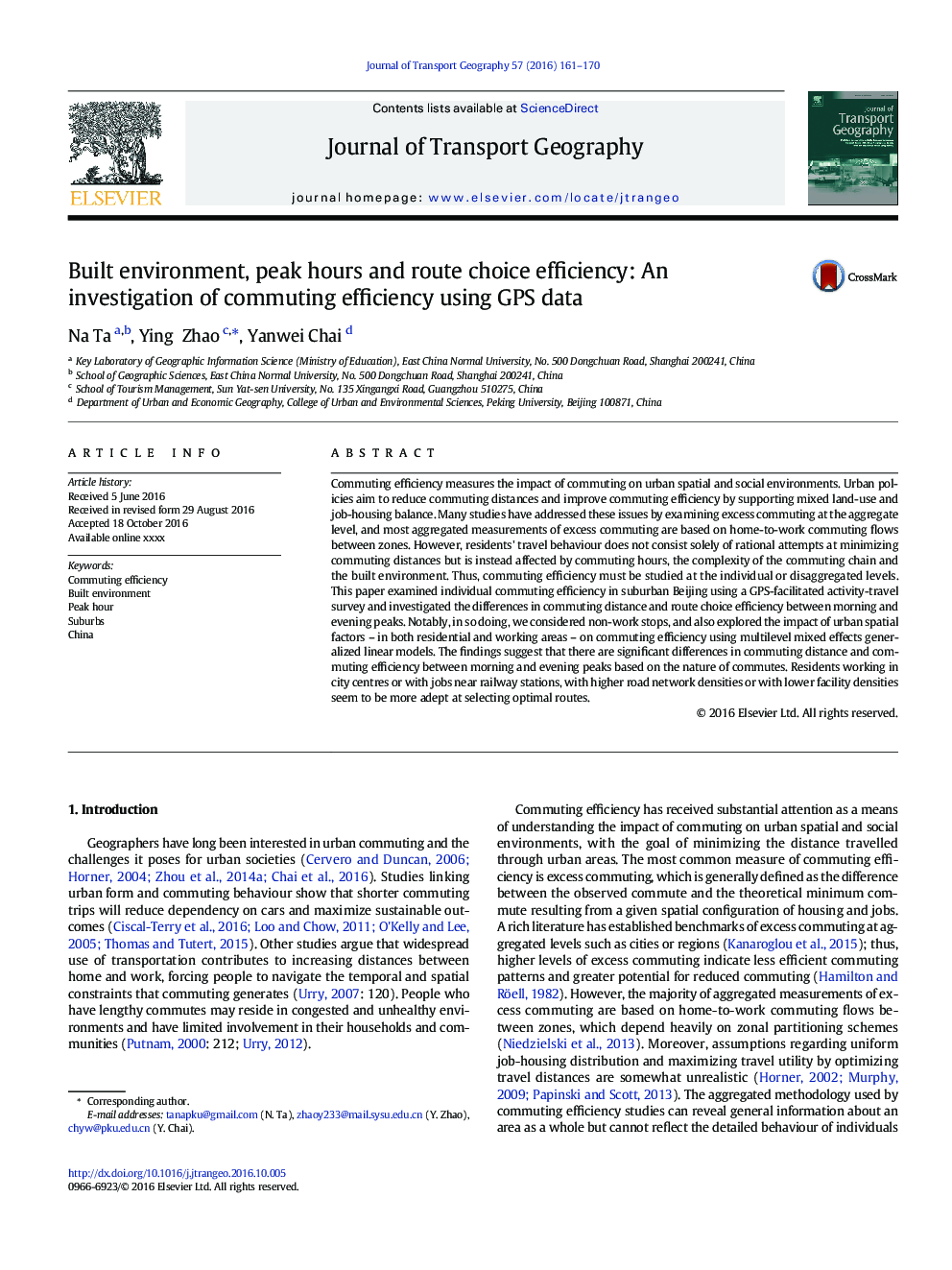| Article ID | Journal | Published Year | Pages | File Type |
|---|---|---|---|---|
| 5117582 | Journal of Transport Geography | 2016 | 10 Pages |
Abstract
Commuting efficiency measures the impact of commuting on urban spatial and social environments. Urban policies aim to reduce commuting distances and improve commuting efficiency by supporting mixed land-use and job-housing balance. Many studies have addressed these issues by examining excess commuting at the aggregate level, and most aggregated measurements of excess commuting are based on home-to-work commuting flows between zones. However, residents' travel behaviour does not consist solely of rational attempts at minimizing commuting distances but is instead affected by commuting hours, the complexity of the commuting chain and the built environment. Thus, commuting efficiency must be studied at the individual or disaggregated levels. This paper examined individual commuting efficiency in suburban Beijing using a GPS-facilitated activity-travel survey and investigated the differences in commuting distance and route choice efficiency between morning and evening peaks. Notably, in so doing, we considered non-work stops, and also explored the impact of urban spatial factors - in both residential and working areas - on commuting efficiency using multilevel mixed effects generalized linear models. The findings suggest that there are significant differences in commuting distance and commuting efficiency between morning and evening peaks based on the nature of commutes. Residents working in city centres or with jobs near railway stations, with higher road network densities or with lower facility densities seem to be more adept at selecting optimal routes.
Keywords
Related Topics
Life Sciences
Environmental Science
Environmental Science (General)
Authors
Na Ta, Ying Zhao, Yanwei Chai,
